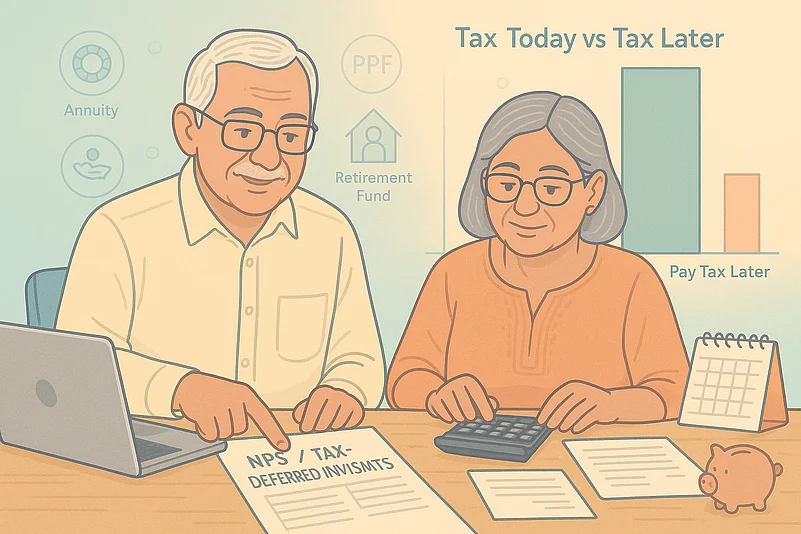Planning for retirement is one of the most important financial goals in life. But for many, it often feels overwhelming, not because of the money itself, but because of the complex financial jargons. These terms may sound intimidating or confusing and a lack of understanding can result in under-preparedness or missed opportunities. Lack of properly understanding this jargon may even lead to serious consequences, such as financial insecurity in later years.
As such, learning these key terms related to retirement planning can give you the confidence to ask the right questions, compare the right products, and make informed choices to get the best returns possible.
Here are some Financial Jargons that are simplified so that retirees may make healthy financial decisions.
1. Retirement Corpus
This is the total amount of money you need to accumulate before retirement to meet your expenses for the rest of your life. It is also known as simply a corpus or a retirement fund. Experts suggest that one starts accumulating a retirement fund at the beginning of one's career to avoid shortage of funds later or compromises in lifestyle in retirement due to paucity of funds.
Why it matters: Without knowing what your target corpus should be, you may end up saving too little and outliving your money. Calculating your retirement corpus will help you set a realistic savings goal, considering changing inflation rate or your life expectancy, and lifestyle.
2. Annuity
An annuity is a financial product that gives you regular income (usually monthly) in exchange for a lump sum payment. It’s commonly used in retirement for steady post-retirement income. As your regular monthly income is likely to stop in retirement, it is important to invest in annuities to maintain a certain monthly cash flow to cover monthly expenses in your retired years.
Why it matters: Annuities help manage longevity risk—the danger of outliving your savings. Choosing the right type of annuity ensures you get a stable income even when you are no longer working.
There are several types of annuities one can choose from:
• Immediate Annuity: Starts right after you invest
• Deferred Annuity: Starts after a chosen time
• Lifetime Annuity: Pays till the end of your life
3. NPS (National Pension System)
This is a government-backed retirement savings scheme that lets you invest regularly during your working years. At retirement, 60 per cent of the amount can be withdrawn in lump sum, while the balance 40 per cent has to be mandatorily used for buying an annuity plan from an insurance company. It generates market-linked returns, but requires a lot of discipline and consistency on the investor's part to generate the required corpus.
Why it matters: NPS is a tax-efficient, low-cost way to build a retirement corpus. Understanding how much to contribute, what asset mix to choose, and how annuities work within NPS is key to using it effectively.
4. Vesting Age
This is the age when your pension or annuity payments start. For many retirement plans, this is set between 55 and 65 years. Many investors choose a higher vesting age so that their annuity payments can cover a longer span of their retirement period.
Why it matters: Knowing your vesting age will help you plan your transition from earning a salary to receiving a retirement income. It also affects tax treatment and payout duration.
5. Inflation-Adjusted Returns
This is the real return you earn on your investments after accounting for inflation. Many advisors suggest taking inflation into account while investing, especially when planning for retirement, in order to stretch your corpus for a longer period of time and avoid shortage of funds due to low returns.
Why it matters: A sum of Rs 10 lakh saved today may not be worth the same 20 years from now due to rising prices. Understanding inflation-adjusted returns ensures that you pick investments that preserve and grow your purchasing power.
For instance, if your investment gives 8 per cent return, but inflation is 6 per cent , your real return is just 2 per cent.
6. SWP (Systematic Withdrawal Plan)
An SWP allows you to withdraw a fixed amount regularly from your investment, especially mutual funds, while the rest remains invested. An SWP helps retirees with monthly cash flow to not only cover expenses but also cover emergencies when they arise. It allows seniors to be more disciplined with their withdrawals and not withdraw huge chunks of money from their investment instruments.
Why it matters: SWPs are useful in creating a monthly income from your investments post-retirement. They also provide flexibility and potential tax efficiency compared to lump sum withdrawals.
7. Asset Allocation
This refers to how your money is spread across different investment types—such as equity, debt, and gold. Diversification across and within asset classes is important. Asset allocation would depend on your risk capacity
Why it matters: The right mix helps manage risk and return. Younger retirees might need more equity for growth, while older ones may need more debt for stability. Poor asset allocation can expose you to unnecessary risk or limit growth.
8. Life Expectancy Risk
This is the risk of living longer than your savings last. It is always a good thing to save more that you expect to live to avoid shortage of money in retirement and dependence on children. Miscalculation may lead to serious budget cuts and lifestyle changes that may compromise your health, and you may even end up outliving your corpus.
Why it matters: With increasing life expectancy, many retirees will live 20–30 years after they stop working. Planning for this risk ensures you don’t outlive your money.
Tip: Plan for at least 85–90 years of life while building your retirement corpus.
9. Tax-Deferred Investment
These are investments where you pay taxes later—not when you invest or earn income—but at the time of withdrawal. It is important to assess your financial goals and income level, as the taxes are not removed, but just delayed. This type of investment focuses on growing your money in a disciplined and structural way.
Why it matters: Instruments like NPS offer tax deferral, helping you save more and let your money grow longer before taxes apply.
Conclusion: Knowledge Is Your Strongest Asset
Retirement planning is not just about saving money—it's about making smart, informed decisions. Understanding these financial jargons can help you evaluate your options better, avoid common mistakes, and help you build a secure and comfortable retirement.
Instead of relying solely on advisors or schemes you don’t fully understand, take control of your finances by learning the basics. Ask questions and understand the jargons; your future self will thank you.

















